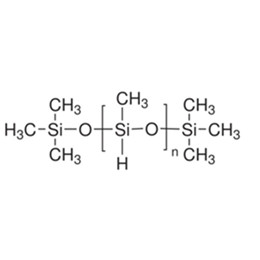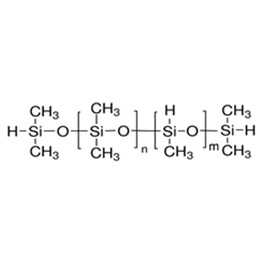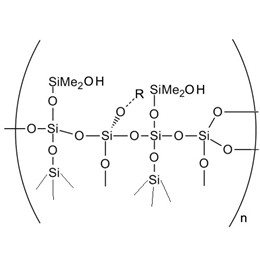Silicone coatings are coatings with silicone resin as the main film-forming material and additives, with excellent weathering resistance, chemical resistance, and high-temperature resistance, etc., and are widely used in aerospace, automotive manufacturing, construction, electronics, ships and coatings, and other fields. So what are the types of silicone coating?
- Silicone insulating coating
- Silicone heat-resistant anticorrosive coating
- Silicone weathering coating
- Silicone mold release coating
- Silicone building waterproof coating
- Silicone colored coating
This post will then go through each category in turn, and introduce how to make silicone coating performance better.
1. Silicone insulating coating
High temperature-resistant insulating coatings are one of the most important applications of silicone resin. Electrical motors and electrical equipment require a variety of electrical insulating materials, so the technical level of electrical equipment is closely related to the quality of insulating coatings. Electrical insulating materials are divided into seven levels, and different levels have different maximum permissible operating temperatures.
General-purpose organic insulating coatings can only work at 130 ℃ for a long time, some heat-resistant organic resin can only be used at 150 ℃. The use temperature of silicone insulating coatings is 180~200℃, and in some cases, it can even be increased to 250~300℃. The material coated with silicone insulating coating can be used as H-class electric insulating material.
![]()
XJY-8010A/B/XJY-83350 Flake Silicone Resin can be used for high-temperature-resistant powder coatings and liquid coatings. The primary feature of silicone resin is its excellent heat-resistant property, which hardly decomposes at 200℃ or even higher, and can be used to prepare various heat-resistant coatings with heat-resistant insulation grades up to H class. Silicone resin also has excellent weather resistance, ozone resistance, arc resistance, hydrophobic moisture resistance, salt spray, mold resistance, and other properties. For example, coatings modified with more than 20% silicone resin have significantly improved water resistance, yellowing resistance, temperature resistance, UV resistance, and other properties.
The weight, volume, price, and service life of electric motors and electrical equipment depend on the performance of insulating coatings. The higher the heat resistance of the electrical insulation material, the stronger the electrical insulation performance, under the same power conditions, the volume of electrical equipment can be made smaller, and lighter in quality, and the longer the service life. Silicone insulating material is the excellent performance of high-temperature insulation material, so that the same power of the motor weight reduction of 35% ~ 40%, and reduces the consumption of copper and silicon steel sheet.
1.1 What is the application of silicone insulating coating?
One of the main applications of silicone insulating coatings is coil impregnation coatings for H-class motors and transformers. Its main component is Methyl Phenyl silicone resin, which is diluted with toluene or xylene to form a 50%~60% solution as a finished product.
1.2 What is the method of using silicone insulating coating?
It needs to be prepared to deal with the coil in the dipping paint before drying at 100 ~ 110 ℃ in order to remove the moisture and volatile substances contained and then cooled to about 50 ℃ for dipping paint to do not occur until the bubbles taken out after treatment hang for several hours for air drying. After air-drying the product is first heated at 100 ℃ to make the solvent evaporation and removal and make the initial polymerization, and finally heated at 200 ~ 250 ℃ for a few hours to complete the final curing, before and after a total of 10 ~ 15h heating.
2. Silicone heat-resistant anti-corrosion coating
People usually use coatings coated in metal parts and other materials to prevent corrosion, but organic varnish and lacquer are not heat-resistant, organic resins at temperatures greater than 150 ° C most of the carbonization, and when the temperature is lower than -70 ~ -50 ° C and brittle, resulting in the coating from the surface of the material off, silicone resins have excellent resistance to high temperatures and weathering properties so that it has become the ideal high-temperature coatings materials. In addition, silicone resin is oxidized into silica at high temperatures and sintered with adiabatic materials to form a composite material with higher temperature resistance. In addition to heat resistance, silicone coatings are also weather-resistant, water-resistant, resistant to various gases and vapors, ozone-resistant, and ultraviolet-resistant. Therefore, it has been widely used as flue gas, boilers, electric furnaces, various heaters, cement roasters, oil crackers, and other heat-resistant corrosion-resistant coatings, as well as used in aircraft, missiles, spacecraft, etc., adiabatic protective coatings.
![]()
2.1 How to classify silicone weathering anti-corrosion coating?
Heat-resistant silicone anti-corrosion coatings are usually divided into two categories: below 260 ℃ and within the range of 260 ~ 650 ℃. The former is usually modified silicone resin (silicone content of about 25% ~ 30%) as the base material, the latter has a higher silicone content. Generally speaking, the higher the use temperature, the higher the silicone content required.
2.2 How to make silicone heat-resistant anti-corrosion coating?
In the preparation of silicone heat-resistant coatings, in addition to the silicone resin solution that can form a film, it is also necessary to add fillers (e.g., mica powder, talcum powder, glass powder, etc.) and pigments (usually using heat-stable inorganic pigments, such as aluminum, zinc powder, carbon black, etc.). The type of filler has a great influence on the heat resistance of the formulated coating. For example, silicone coatings containing aluminum powder can be used for a long time at 540℃. The addition of a silane coupling agent in the silicone thermal insulation coating can improve the dispersion of filler and viscosity of the coating, improve the corrosion and water resistance of the coating, increase the adhesion of the substrate and interlayer adhesion, reduce the curing temperature of the coating, and improve the physical and mechanical properties of the coating. In order to accelerate the curing speed of the paint film, a variety of different catalysts can be used. Catalysts are generally zinc, cobalt, magnesium, and iron octanoate or naphthenate, of which zinc octanoate has the best effect.
3. Silicone weathering coating
Modified silicone resin coatings can withstand long-term outdoor exposure, with no loss of light, chalking, discoloration, or other phenomena, weathering performance is very excellent, and cheaper, able for outdoor drying, and construction is simple. Now the main varieties of silicone-modified alkyd resins, polyester resins, acrylic resins, polyurethane resins, self-drying and drying types of the two categories, in terms of weathering performance, drying type is superior to the self-drying type.
![]()
(1) Self-drying alkyd silicone resin weathering coatings can be cured at room temperature, and the price is low, with a service life of up to 8 to 10 years. It is mostly used as maintenance coatings for permanent buildings and equipment, such as high-voltage transmission line towers, railroad bridges, trucks, oil drilling equipment, power stations, agricultural machinery, and marine vessels, such as the water part of the decorative protection.
(2) Silicone-modified polyester coating is a drying-type weathering coating, mainly used for metal panels, pre-painted metal panels for construction, and aluminum roof panels, which still do not need to be recoated.
4. Silicone mold release coating
Silicone resin anti-adhesive and mold release performance and silicone oil are similar the main difference is: that silicone mold release agent can form a layer of semi-permanent film on the mold and can be used tens to hundreds of times without replacement, while silicone oil release agent needs to be replaced frequently. Therefore, silicone resin mold release agents are cleaner and corrosion-resistant, which can solve the problem of silicone oil mold release agent staining products.
XJY-RA/XJY-RAN MQ Silicone Resin is made of tetrafunctional silicone (Q) polymerized with monofunctional methyl silicone (M), which has good application efficacy in the field of high-temperature, semi-permanent, and permanent release agents.

4.1 How to use silicone mold release coating?
Silicone coatings used for mold release are usually dilute solutions of low R/Si value silicone resins dissolved in aromatic hydrocarbons or mixed solvents of aliphatic hydrocarbons and aromatic hydrocarbons with a concentration of generally 15% to 30%. Usually also contains a small amount of silicone oil to prevent thermal cracking of the nitrocellulose resin film. Silicone resin release coating can be used by spraying, brushing, or dipping, and finally must be cured at 200~230℃ for about 2h, so that a smooth, colorless semi-permanent coating film can be obtained. To achieve the best demolding effect and ensure that the film is firmly attached, the surface of the metal mold must be cleaned and degreased by sandblasting.
4.2 How to apply silicone mold-release coatings?
Silicone mold release coatings have been used as release agents for bread trays, frying pans, non-stick cookware, molds for plastic and rubber molded products, and non-stick release paper tapes, etc. Because of its long service life and some other advantages, it has replaced traditional release materials such as grease, mineral oil, and fatty acids.
4.3 How to choose silicone mold-release coating?
Silicone mold release agents are usually used as pure silicone oil, silicone oil emulsion, and silicone resin, and the choice of use depends mainly on the economy, service life, and ease of application. For example, in the production of rubber, plastic mold products generally can be every few molds gently sprayed with silicone oil emulsion release agent; but in the case of baking bread, the baking pan release agent requires a long service life, for this reason, usually choose silicone resin as a mold release coating. By spraying or impregnating, the silicone resin is applied to the baking tray and other non-stick cookware, and the tray is grilled to cure the resin. So the production of the bread tray demolding 200 ~ 500 times without adding fat, when the bread tray loses the demolding effect, can be re-processed according to the above method.
5. Silicone architectural waterproof coating
Silicone resin is hydrophobic, so it can be used as a waterproof and moisture-proof coating, which is widely used for waterproofing buildings and silicone roof coatings. Silicone building waterproof coating has excellent waterproof, weatherproof, anti-peeling, and chemical corrosion resistance, and is suitable for metal roofs.
The waterproofing principle of silicone architectural waterproofing agents is different from that of general-purpose waterproofing materials such as organic coatings and asphalt. Organic coatings, asphalt through the blocking of masonry and concrete structural materials to achieve the effect of waterproofing pores; while silicone building waterproofing agents are through a chemical reaction with the structural materials, the generation of a very thin film of insoluble hydrophobic resins on the surface of the substrate. Because the silicone building waterproofing agent does not block the pores of the building materials, so not only has water repellency but also maintains the normal ventilation of the building, which is its greatest advantage. After the silicone building waterproofing agent treatment the building, can keep clean, and non-stick dust, improve the building's heat insulation, and sound insulation performance, and prevent the building surface from cracking, so that the building is not easy to weather, thus extending its service life, widely used in silicone roof coating.
![]()
XJY-8205 Powder Series Methyl MQ Silicone Resin is a solid powder resin, this resin can provide excellent transfer resistance and water resistance, can form a long-lasting film and durable waterproof, in the field of building materials, and can also be used as silicone waterproof coatings.

XJY-701 Polymethylhydrosiloxane can be crosslinked to form a film at low temperatures under the action of a metal salt catalyst to form a waterproof film on the surface of various substances and can be added to silicone waterproof coatings as a waterproofing agent for various materials such as metal, cement, and marble.

XJY-711 Hydride Terminated Methyhydrosiloxane/Drimethylsiloxane Copolymer can be added to silicone coatings as a building waterproofing agent.

5.1 How many types of silicone building waterproof coating have?
Silicone building waterproof coating can be divided into three types: water-soluble, solvent-based, and emulsion-based.
(1) The main component of a water-soluble silicone building waterproofing agent is sodium methyl silicate solution. It is with Methyl Trichlorosilane in a large amount of water hydrolysis, and then the resulting precipitate is filtered and washed with a large amount of water to get methyl silicic acid, and then mixed with an aqueous solution of sodium hydroxide, and heated at 90 ~ 95 ℃ for 2h, and then add water, filtration that is made of sodium methyl silicate solution.
When sodium methyl silicate meets water and carbon dioxide in the air, it will be hydrolyzed to generate methyl silicate, which will polymerize on the surface of the substrate very quickly to form a very thin layer of cross-linked polymethyl siloxane film with hydrophobicity. Concrete and masonry are essentially a silicate material, so the methyl silicic acid and its surface silicon hydroxyl condensation, the formation of a more solid Si-O-Si bond.
(2) Solvent-based silicone building waterproofing agent currently has two types of products.
![]()
The first is a solvent-based Polymethyltriethoxysilane building waterproofing agent; the other is an Acrylate modified silicone building waterproofing agent.
Polymethyltriethoxysilane resin is a hydrolyzed condensation product of Methyltriethoxysilane, neutral, must be added to alcohol as a solvent. When applied to the surface of the substrate, the solvent evaporates quickly, so the pores in the masonry are deposited on a layer of very thin film, the film is colorless and transparent, with no luster, and no viscosity. This silicone-building waterproofing agent by the outside world is much smaller than Sodium Methyl Silicate, thus applying a wider range of waterproofing effects is also better.
Acrylate-modified silicone building waterproofing agent is an acrylate-based main chain and the side chain with siloxane or silicone hydroxyl macromolecules. This coating set of acrylic coatings and silicone coatings of the advantages of super weatherability, good adhesion of the coating, excellent water resistance, paint film full and other characteristics, and can be cured at room temperature.
(3) Emulsion-type building waterproofing agents also have two types, one is pure silicone resin, and the other is acrylic-modified silicone resin. Emulsion-type waterproofing agent as a result of not using or with a small amount of organic solvents, so more environmentally friendly than solvent-based.
6. Silicone-colored coating
Silicone-colored coatings are pure silicone resin or modified silicone resin as a base material, adding pigments modulated coating. In construction, silicone resin can be used as the carrier of water-based pigments, which can be almost any color. Compared to ordinary dispersion and silicate coatings, this colored coating is waterproof, breathes, and has all the properties of silicone resins. Silicone thermochromic coatings, on the other hand, are pure silicone resins to which temperature-sensitive color-changing pigments and other fillers are added. According to the different color-changing temperature ranges of the color-changing pigment, it can make different alarm temperatures indicating temperature coating. It can be used for early warning of various high-temperature equipment.
![]()
7. How to make silicone resin coating performance better?
Silicone coating has excellent properties such as high temperature resistance; electrical properties and water repellency; large surface activity, low tension; good cold resistance; good chemical resistance; good mildew resistance, and so on, which is widely used in various fields. How to improve the competitiveness of your products?
XJY Silicones is one of the leading silicone MQ resin and VMQ silicone manufacturers in China, with more than 30 years of R&D and manufacturing experience in the silicone industry as well as more than 15 related patents and technical support. Our silicone resins can meet the needs of the coating field and support the provision of diversified customized solutions and lead time.



